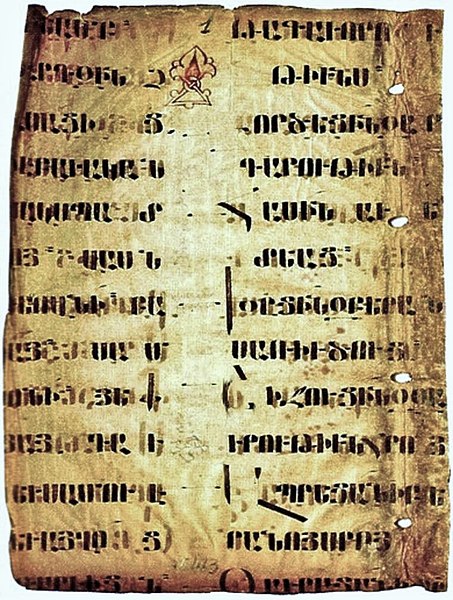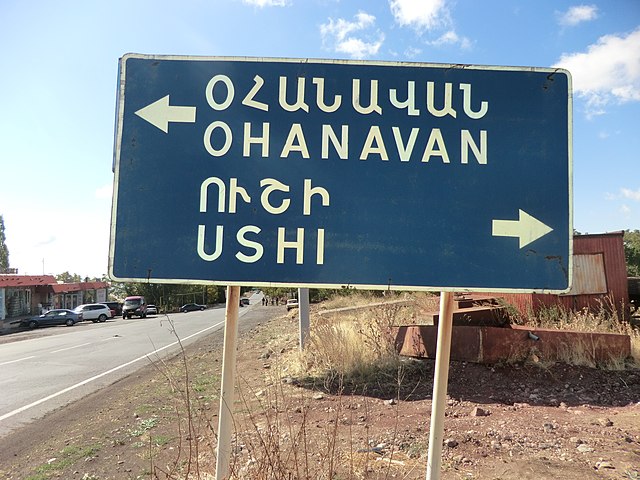The Armenian alphabet or, more broadly, the Armenian script, is an alphabetic writing system developed for Armenian and occasionally used to write other languages. It was developed around AD 405 by Mesrop Mashtots, an Armenian linguist and ecclesiastical leader. The script originally had 36 letters. Eventually, two more were adopted in the 13th century. In reformed Armenian orthography (1920s), the ligature և ev is also treated as a letter, bringing the total number of letters to 39.
Armenian alphabet
Armenian khachkars in the form of individual Armenian letters in Oshakan, Armenia
The monument to the Armenian alphabet at the Melkonian Educational Institute in Nicosia, Cyprus
Armenian manuscript of the 10th or 11th century. History of Armenia of Movses Khorenatsi
Armenian is an Indo-European language and the sole member of an independent branch of that language family. It is the native language of the Armenian people and the official language of Armenia. Historically spoken in the Armenian highlands, today Armenian is widely spoken throughout the Armenian diaspora. Armenian is written in its own writing system, the Armenian alphabet, introduced in 405 AD by the canonized saint Mesrop Mashtots. The estimated number of Armenian speakers worldwide is between five and seven million.
Armenian manuscript, 5th–6th centuries.
The Four Gospels, 1495, Portrait of St Mark Wellcome with Armenian inscriptions
First printed Armenian language Bible, 1666
Armenian language road sign.








